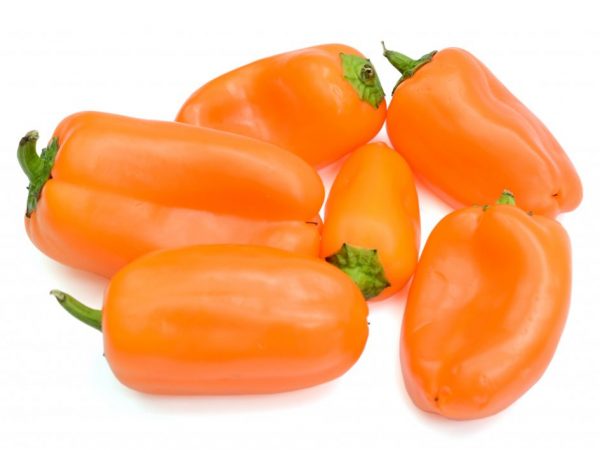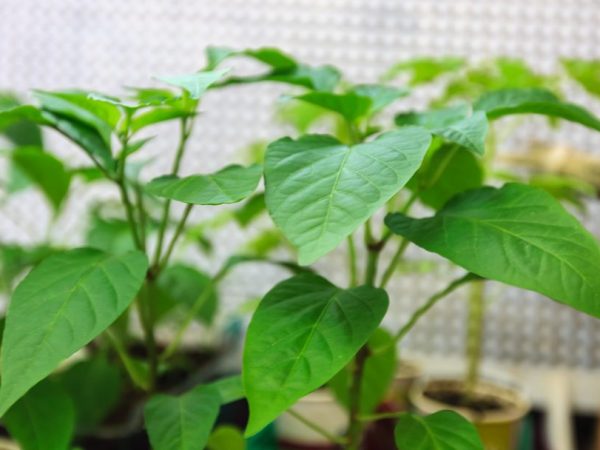Characteristics of the Chanterelle variety
Recently, hybrid varieties have gained particular popularity: they differ from varietal seeds in abundant fruiting, increased resistance to diseases and temperature extremes. Sweet pepper chanterelle belongs to the f1 category. We will consider a detailed description of the variety in the article.

Characteristics of the Chanterelle variety
Characteristics of the variety
Hybrid varieties combine only the best characteristics of the parents. A vegetable plant like bell pepper comes in a huge variety of varieties. Among them, we can mention the pepper of the Chanterelle f1 variety.
The fruits of the Chanterelle pepper have a compact, conical shape. They are not too large - 25-45 g, glossy, with fleshy walls (up to 5-6 mm thick). In an unripe state, the fruits are green in color, in a state of full maturity they are orange or red. A distinctive feature of this hybrid is that there are practically no seeds in its fruits.
The taste of this variety is excellent: aromatic pepper, sweet, juicy and crunchy pulp. Due to its compact size, it is ideal for whole fruit canning.
Yield
The Chanterelle variety does not differ in too high a yield - it is 0.8 - 1.0 kg per bush. Up to 2.5 kg of pepper are harvested from 1 m2. The number of fruits harvested does not depend on how the plant was grown - in a greenhouse or in the open field. The main thing is to create the necessary conditions and adhere to the required agricultural technology.
Fruits of the Chanterelle pepper variety are well stored as a whole in cool dry rooms or cellars. When stored in the refrigerator, it stays tight for a long time and does not fade.
Growing seedlings
Chanterelle pepper belongs to the early maturing varieties. From the appearance of the first shoots to the state of technical ripeness, 100-105 days pass. It will take more time to complete full maturation - 130-135 days.
It is grown in seedlings. Already by the first days of March, they begin to prepare seed for seedlings. It is recommended to plant (dive) growing plants in the phase of appearance of 1-2 true leaves. This must be done without fail, since, as it grows, the bush will need much more space, nutrients and moisture. Only if this condition is met, full-fledged strong seedlings are obtained.
The growing period of seedlings is approximately 60 days, starting from the appearance of the first shoots. At the stage of budding, a transplant is performed.
Landing in the ground
Drop off time

The variety can be grown on the balcony
If the plant is intended for greenhouse cultivation, then the seedlings are planted in a shelter already in mid-May. In the open ground, landing is made a little later, after the threat of frost has passed - at the beginning of June. For this variety, greenhouse or pot cultivation will be the most optimal; it grows well in pots on windowsills or on a closed balcony.
Disembarkation rules
Seedlings are planted according to the scheme 30-40 x 50. A row is formed with a distance between the bushes of 30-40 cm, and a row spacing of 50 cm.
The bush needs compulsory formation.To do this, remove all lateral leaves up to the first fork. The grown bush will not be too tall - it is powerful enough, but compact. The bush is half-stem, that is, in the lower part, the stem is divided into 2-3 shoots. Flowers, and then fruits, appear on the bushes in those places of branching. There is no need for pinching - this way you can only reduce the yield.
10-12 fruits are formed on one plant. But only in the presence of good watering and dressing, to which this variety is very demanding: the soil must be fertile, well fertilized and always sufficiently moist. The plant is also distinguished by its thermophilicity.
Top dressing
Pepper loves feeding. Without this, the fruits can be thin-walled and too small. For fertilization, you can use the following compositions:
- 1) Water-10l, carbamide 2 tsp, superphosphate 2 tsp;
- 2) For the same amount of water, 1 tsp is taken. superphosphate, potassium sulfate and urea;
- 3) Water (amount as in previous cases), 2 tbsp each. potassium salt and superphosphate.
- 4) Water and 30 g of superfarsfat (solution for spraying plants).
Conclusion
Sweet pepper hybrid Chanterelle, despite its modest size, has a high taste. It is almost universal and suitable for open field, greenhouse and even indoor growing. The undoubted advantage of this variety is the possibility of long-term fresh storage.


